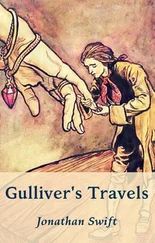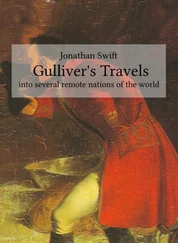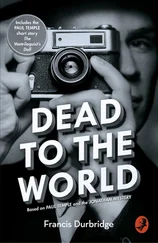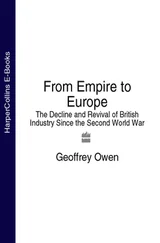1 1. Steven Pinker, 2018. Enlightenment Now. London: Penguin.
2 2. Hans Rosling, 2018. Factfulness. New York: Flatiron.
3 3. Yuval Noah Harari, 2016. Homo Deus. New York: Penguin.
4 4. C-Span, 1990. Earth Day 1990 Rally, April 22. Available at: https://www.c-span.org/video/?14203-1/earth-day-1990-rally
5 5. Cesare Marchetti, 1989. How to solve the CO2 problem without tears. International Journal of Hydrogen Energy, 14(8), 493–506.
CHAPTER 2 A DOUBTFUL VICTORY
“ IT IS IN OUR HANDS TO LEAVE THESE DARK MACHINES BEHIND, IN THE dark ages where they belong and to press forward to cap a historic movement toward a long era of peace.” 1This was how American President George H. W. Bush described the end of the Cold War. Technology was overwhelming tyranny, he reasoned, so that the age of information would be an age of liberation. British Prime Minister Margaret Thatcher echoed his optimism: “Our policies have brought unparalleled prosperity.” 2As McDonald’s opened its first franchise in Russia, Hollywood movies were tolerated by the theocracy in Tehran, and crowds kept descending on the Berlin Wall to hack pieces of concrete as a souvenir, liberalism appeared to become an irresistible guide to world politics.
This chapter captures the mood in the West at this decisive moment in the late 1980s and early 1990s. It measures its advantages, but also traces back worries, about the neglect of infrastructure, the decadence trap, with wealth decoupling from virtue, economic growth predating on the environment, the prospect of decline if the West did not respond to the ambitions of new competitors. The victory of the West, we will discover, was perceived as a doubtful victory. Some of these challenges, indeed, were present at an earlier stage. The 1970s formed a watershed between the 30 years of growth after World War II and a subsequent period of decay. Yet, still, it was at the end of the Cold War that the West had its hands free to address those challenges.
But what was the Cold War in the first place? In the early 1980s, a soldier in a bunker near Moscow was alerted to an incoming American missile. The alert came at a sensitive time. For months, the United States had been testing the resolve of the Soviet Union by deploying nuclear-capable bombers and submarines close to its borders. A Korean passenger plane, mistakenly identified as an American military aircraft, had just been shot down. Now, this soldier in his bunker saw an intercontinental ballistic missile heading toward his country. That was at least what satellites and computers made of it. The incoming missile was in reality nothing more than the sun reflected by clouds. Luckily, the duty officer also assumed it was a false alarm. This was the Cold War: the permanent threat of mass destruction by tens of thousands of nuclear weapons.
Close calls like this were common. They showed that if the war between the two superpowers ever became hot, the whole world would burn in a nuclear apocalypse. This threat hung over the world like a permanent storm cloud. In its shadow, the global order remained a patchwork of regional battlegrounds, like Southeast Asia, the Middle East, and Africa, and a few havens of relative peace. It was a breath-taking joust between the United States and the Soviet Union, a clash of titans over geopolitical interests, with the Soviets seeking to expand their influence across Eurasia, and Washington seeking to stop it – a conflict over ideology, technological leadership, economic dominance, and military supremacy. It was a period of physical walls, barriers that halted both people and trade, and mental walls, separating ideas. The Cold War lasted over 40 years.
Rather suddenly, the skies cleared. In 1985, the Secretary General of the Communist Party, Mikhail Gorbachev, and American President Ronald Reagan had made overtures and met for the first time in Geneva. That year also, Mikhail Gorbachev avowed that the rigid Soviet system needed openness and reform. Glasnost and perestroika became the keywords in Russian policy reform. In 1987, he allowed private ownership, followed by the relaxing of control over smaller Soviet republics in 1988, and first attempts toward democratization in 1989. That year, Soviet troops withdrew after a decade of deployment in Afghanistan. The dismantling of a bastion of authoritarianism had started.
Dictatorship was also defied in other parts of the world. In 1987, direct elections had peacefully ended a decade of military rule in South Korea. The same year, Taiwan, which already had moved toward economic openness, lifted martial law. In Singapore, strongman Lee Kuan Yew partially democratized the city state and prepared to step down. In 1989, tens of thousands of students assembled in Beijing to call for democracy. Despite brutal suppression, these Tiananmen protests made it appear that economic growth would make democratization irresistible. Also in 1989, elections ended military rule in Turkey. In Iran, Akbar Rafsanjani was elected president with an agenda of opening up, also toward the West.
1989 and 1990 were years of excitement, of electricity in the living rooms of hundreds of millions of households when the images of the collapsing Soviet Empire reached them. The West entered a moment without peer rivals, a unipolar moment. With 6 percent of the world population, the countries around the Atlantic Basin controlled over 60 percent of the world’s economic production and trade. An average citizen here was twice as rich as a person in Russia, ten times richer than a Chinese, and 14 times wealthier than someone living in Africa or South Asia. Over 50 percent of manufacturing was located in the West. Western countries hosted all top universities and owned 60 percent of the world’s patents. 3Whether one lived in Boston, New York, London, Amsterdam, or Paris, one could see the emergence of a global elite that understood the same language, watched the same movies, and used the same brands. Its networking power, the capability of weaving large markets, was unequaled. It represented around 40 percent of the world’s shipping fleet, half of the largest multinationals, 70 percent of all large aircraft, and 90 percent of the internet traffic. At the center of this web of commerce and information sat the United States, the universal spider.
With the Soviets on the ropes, the United States was freed from its most important geopolitical concern: the menace of a Eurasian Leviathan. This geopolitical fixation had its roots far back in history, more precisely in the resistance to Great Britain as its imperial overlord. The American Declaration of Independence in 1776 was only the beginning of that struggle. In 1814, British troops burned the White House. It was this event, alongside a persistent European presence in the western hemisphere, that led to the Monroe Doctrine, prescribing the United States to keep rivals at a distance. Since then, Washington has kept a wary eye on the appearance of any Eurasian rival capable of projecting power into the Atlantic and Pacific Ocean, and, hence, of menacing the American continent. This had been the case first with Great Britain in the nineteenth century, then with Germany and Japan in the early twentieth century, and subsequently with the Soviet Union during the Cold War. Each time, these actors had first sprung up as Eurasian powers, forged onwards into the oceans, and extended their power to the shores of the American continent.
Hence, the United States pursued absolute security on the American continent, predominance in its flanking oceans, as well as the preservation of a first line of defense against Eurasian powers in Western Europe and East Asia (map 2.1). After the collapse of the Soviet Union, this strategy was almost fulfilled. America’s neighborhood was secure. If in the north, Canada figured as a loyal seafood supplier, Mexico in the south could be considered its low-income seafood processor. Both countries had around 80 percent of their exports bound for the United States. The North American Free Trade Agreement, NAFTA, signed in 1988, institutionalized these commercial relations. The United States preserved a mutual defense pact with most of the Latin American countries, the Rio Treaty, and had a controlling stake in the Inter-American Development Bank, the IDB. The adjoining two oceans were patrolled by the world’s largest navy and American companies controlled many of the undersea cables and satellites that provided connectivity with Europe and East Asia.
Читать дальше
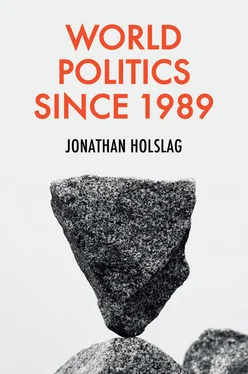
![Деннис Лихэйн - Когда под ногами бездна [Since We Fell ru]](/books/25722/dennis-lihejn-kogda-pod-nogami-bezdna-since-we-fe-thumb.webp)





